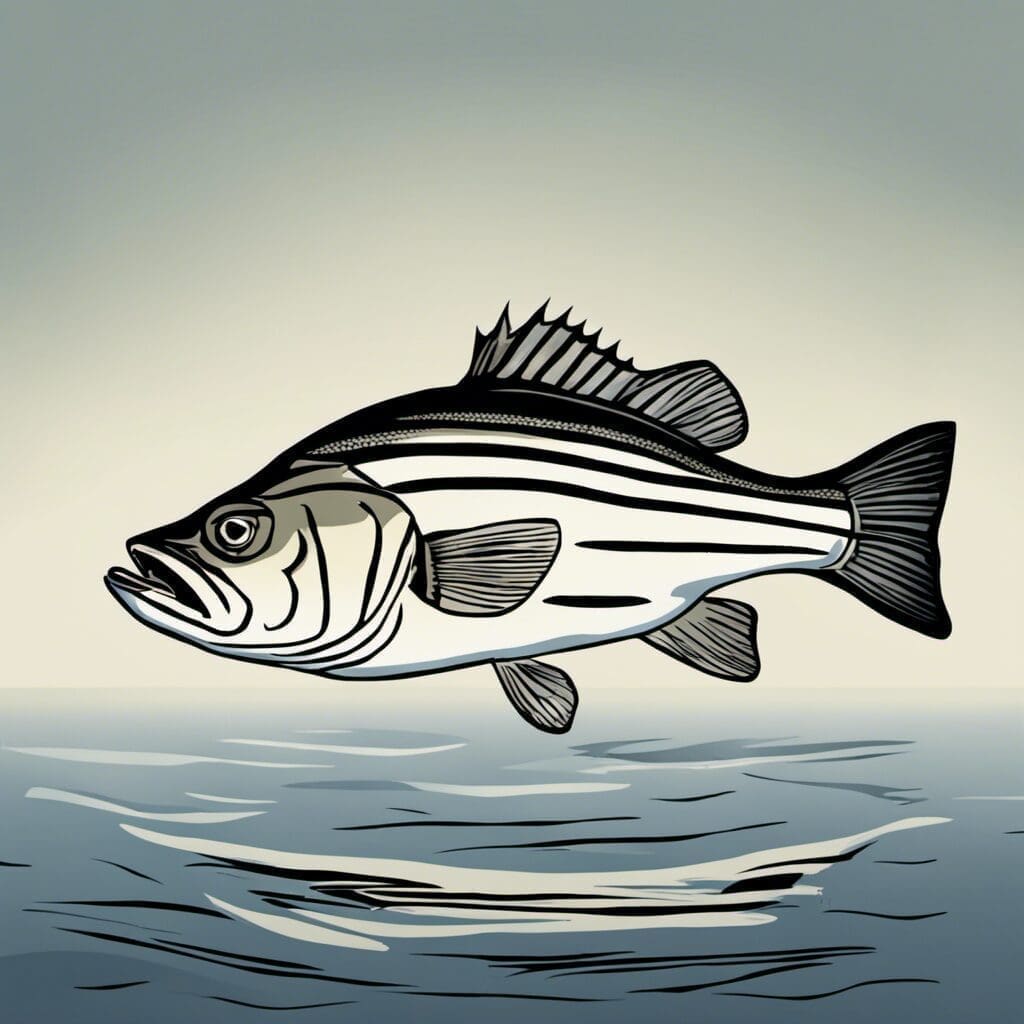Introduction
The Striped Bass, also known as the Morone saxatilis, is part of the Moronidae family. These robust fish are highly prized by recreational fishermen for their size and fighting spirit.
Conservation Status
The striped bass is currently classified as “Least Concern” on the IUCN Red List. They are managed actively in both their natural and introduced ranges, with constraints on commercial and recreational harvest to ensure the sustainability of their populations.
Statistics
The striped bass has a variety of impressive statistics that make it a coveted species among fishing circles.
| Statistic | Average | Range |
|---|---|---|
| Length | 2-3 feet | 1-5 feet |
| Weight | 10-20 lbs | 2 to 70 lbs |
| Lifespan | 10-12 years | 2-30 years |
Distribution
Striped bass are native to the Atlantic coastline of North America, from the St. Lawrence River in Canada to the St. Johns River in Florida. They migrate seasonally, moving offshore/onshore and north/south with changes in water temperature.
Habitats
Striped bass inhabit a variety of water types, from brackish estuaries to coastal waters along the coastline. They are typically found at depths of 0-60 feet and prefer water temperatures between 7 and 18°C.
When and Where to See
The best time to see striped bass is during their spring and fall migrations, particularly at dawn and dusk when they are most active. However, striped bass can be seen throughout the day.
Best Fishing Locations
While striped bass are found across much of the Atlantic coastline, their migratory nature presents an opportunity for fishermen in certain areas at different times of year. Here are a few great places to catch striped bass:
- Hudson River, New York
- Chesapeake Bay, Maryland
- Delaware River, Delaware
- Neuse River, North Carolina
- James River, Virginia
- St. Johns River, Florida
- Savannah River, Georgia
How to Catch
Striped bass can be caught using a variety of bait types, from live baits like eels and bunker, to artificial lures like swimbaits and jigs. Various fishing techniques can be effective, including trolling, fly fishing, and shore casting. The best fishing times depend on location and season, but early morning and late evening are typically the most productive times of day.
Identification Guide
Striped Bass are identifiable by their high back, sleek body and silver sides adorned with seven or eight horizontal dark stripes. They have a large mouth, with a lower jaw extending beyond the eye.
Culinary Significance
Striped bass is a delicious, firm-fleshed fish with a mild, sweet flavor. It is low in fat and high in protein, making it a healthy choice. It is typically grilled, broiled or roasted and can be prepared in a variety of ways.
Additional Information
Striped Bass feed on a variety of prey, including fish, invertebrates, and crustaceans. Their main predators include seals, larger fish, and humans. They have a significant cultural and historical significance, especially in the eastern United States, where they were declared the official state fish of multiple states.
References and Further Reading
For further reading on striped bass, consider the following sources:
- NOAA Fisheries: Striped Bass
- Outdoor Life: Striped Bass
- FishBase: Striped Bass Summary Page

